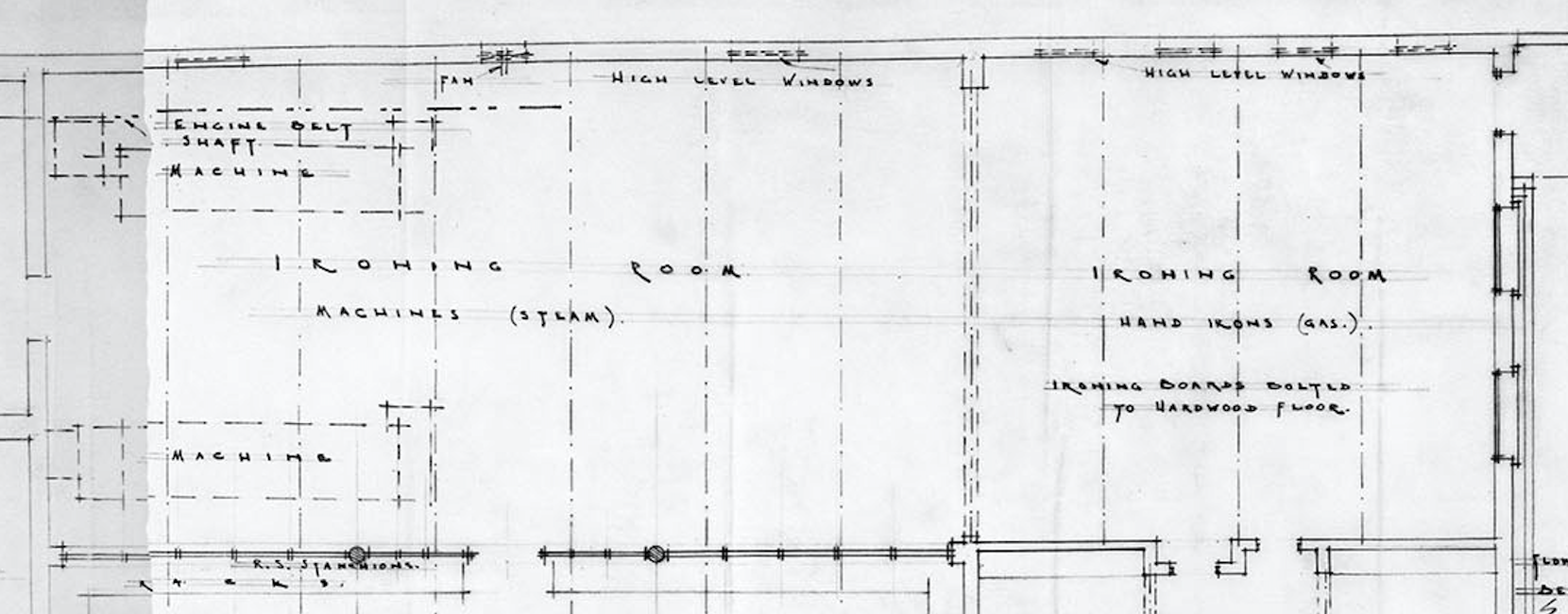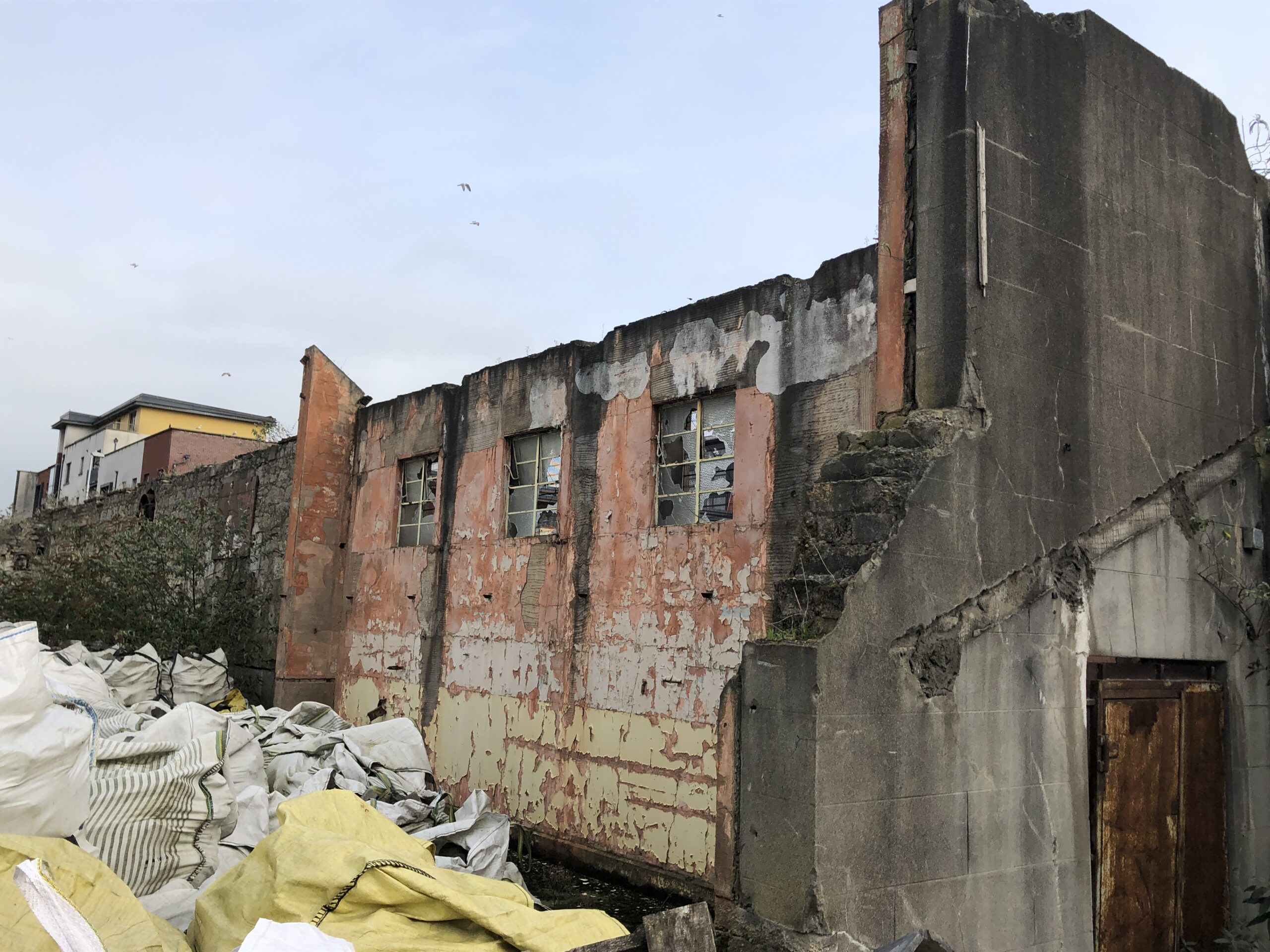Ironing Room
The Ironing Room was the largest of the spaces dedicated to the operation of the laundry business. Located to the rear of the site, along Railway Street, this room would have been the site of daily toil for a great many women over the course of nearly a century.
Only a fragment of this room remains standing today, but the digital reconstruction below gives some idea of what this space would have looked like to those Magdalene Women labouring within.
“Then I was made to go into the laundry—straight away—for about two hours and I was put into…on a…an ironing board with an iron and all tubes coming out of them and I was made iron. I hadn’t a clue sure, even how to iron. The more I couldn’t iron the nun was pushing me…shoving me and digging me into the back of the neck.
At one stage I lost the head and told her to go and f*ck off, and I got battered for it. You know, so you learned to keep your mouth shut, you know, if you weren’t used to it being a Dubliner like me…”
O’Donnell, K., S. Pembroke and C. McGettrick. (2013) “Oral History of Martina Keogh”. Magdalene Institutions: Recording an Oral and Archival History. Government of Ireland Collaborative Research Project, Irish Research Council, p.27.

The above postcard, dating to the mid-1920s shows the operation of the Ironing Room a few decades after its construction.
Historian Jacinta Prunty notes that the ironing room was opened in 1901, and was for its time, extremely well furnished with the latest technologies in order to make this part of the laundry operation run as efficiently as possible.
‘The ironing room contains one large cylinder, two collar machines, six tylers for glazing shirts, three double tables with ten gas irons and a glazier on each, 10 shirt boards furnished with irons, and a large table with two irons for ironing curtains.’
(Jacinta Prunty, The Monasteries, Magdalene Asylums and Reformatory Schools of Our Lady of Charity in Ireland 1853-1973, Dublin: Columba Press (2017) p. 297)

In 1948, an extension to this important room was completed. A stone from the Sisters of Charity’s founding monastery in Caen, France was:
‘…placed here at the building of the new extension, 1948. ‘Surely the spirit of our Holy Founder loves to linger here in this spot, redeemed by his daughters from the empire of Satan, and consecrated to the glorious work he founded over three centuries ago.’
(Prunty, 2017: 504)
This extension is visible on the above plan from the 1954 survey from W. H. Byrne & Son Architects. It is the area to the right hand side [west] of this drawing.
Interestingly, the survey notes several details about the machinery within this room. For example, the steam machinery seems to be contained within the ‘old’ ironing room, whereas the new extension uses gas irons, with ironing boards ‘bolted to [the] hardwood floor.’
At some point, the extension was given a painted yellow wainscot [not shown in our reconstruction], with plain white walls above as can be seen on the remaining part of the walls today [the red colour is the raw plaster behind the paint].

